Artists have been obsessed with self-imposed limitations since time immemorial, setting up walls from which to dive. Cali Bellow’s Leah B. Levinson made a record of bizarro electronic pop, juxtaposing high fantasy, digital decay, and the emotional metal of her band Agriculture. The eclectic soundscapes of nearly a decade’s worth of at-home experiments is distilled into CIAO BELLA, her longest-gestating and finest album, made entirely from MIDI sounds and the human voice.
Overflowing with motifs, Levinson describes CIAO BELLA as a “toy world,” built from the familiar and filtered through her simultaneously expansive and focused vision. Melodies and textures are reused and repurposed and stories are woven into the fabric of the music. Taking inspiration from video games and fantasy, she found freedom in a narrow creative path that still manages to zigzag within the span of each song. I connected with Levinson just before the album’s release last fall to talk genre, DARK SOULS, theme and variation, Muppets, and more.
Do you have any clear memories from when you were younger when music became something more meaningful, that tumbled the dominoes?
It’s a little hard to pinpoint something like that because both of my parents are musicians. They’ve gone on and off between music being part of their careers, but they’ve both played music. Growing up, I took that for granted. Music was always built into my daily life. There was a piano in the house and they were both always playing music, listening to music. I took piano lessons at a young age, but that didn’t really click. With bass, everything clicked and I fell in love with the electric bass. I would be locked away in my room learning songs on bass, mostly classic rock stuff. I got into music both from my dad—the Ramones or the Sex Pistols, who are like the classic rock of punk—and from growing up playing TONY HAWK’S PRO SKATER and SSX ON TOUR; those soundtracks had a huge influence on the music I wanted to make at a young age. I got deeper into punk through that. SUICIDE [the band’s self-titled debut] was really big when I heard it as a different kind of music that still made sense to me within a punk context. It bridged that for me. Another big one that helped bridge the gap at that age was Lou Reed’s TRANSFORMER. The way songwriting and production work on that album set the format in my brain for what an album could be. I wasn’t immediately making music that was anything like them, but they stayed with me for a long time.
It’d be wild if you immediately started making Suicide-sounding songs as a teenager. Like “Frankie Teardrop” as made by a 14-year-old.
We need to hear it.
Having a concept of what music can be and starting to reach towards it are big steps to take. When did that segue into writing and recording your own music?
Pretty quickly. I spent a couple of years playing in the school jazz band, getting used to playing music with people. I would also learn how to play some of my favorite songs. I had a friend who played guitar and we would hang out and play Ramones or They Might Be Giants songs together. We would goof around and end up writing songs, not thinking about what we were doing. Writing music and playing it with people has been pretty constant since then. At the same time, the computer my family had at home had GarageBand on it, so I started messing around with it. That set the format for me to figure out how to record things and obsessively put sounds together in a DAW. To this day, I produce all my music in Logic, which is basically just the beefed-up GarageBand. It stuck with me and laid the blueprint.
You’ve explored a multitude of influences with Cali Bellow—fantasy and literature, video games, spirituality, and more come in and mix with the myriad genres of music. How did that coalesce, or did you realize later that you were unintentionally exploring all these realms? When you’re a kid and you’re consuming as much art and media as you can, it all gets jumbled together in a strange and beautiful way.
I tend to like things that cover a broad variety on a surface level, but what I get out of them is often pretty similar. I draw lines through stuff that seems pretty dissimilar. I think that comes from the amount I think about genre, with genre being a language you learn to speak. Whether as an artist or listener, it’s sort of a code. Once you understand that code a bit, the things that are working within that genre start to make sense in a different way. Styles, genres, and aesthetics communicate certain ranges of feelings. I turn to certain art to access or sit with certain feelings. At the same time, certain things tend to be more formal or thematic. When I see that at work, regardless of the genre or medium, it resonates with me. I’ve always consumed art by dabbling across a pretty vast landscape of things that pique my interest and not being restrictive.
You once described Cali Bellow as a low-stress opportunity to try ideas that might otherwise be intimidating or that you might shy away from in other contexts. How has that sense of experimentation influenced the way you make music? How has it changed over the 10+ years?
What you’re referencing was specifically about a Cali Bellow covers album that I did. It applies to Cali Bellow, but it especially applied there, because then I wasn’t even being precious about my own material. Those songs already exist in their perfect form. To me, it’s raw material that I can pull from and not worry about making the best version of it.
You’re not just mimicking and recreating something.
I can use an idea as a starting point to explore a certain texture more broadly with Cali Bellow. It’s a project that I’ve given myself a lot of time and space with that hasn’t been tied to other people. It’s not a band, I don’t have collaborators who are relying on me, I haven’t had a record label or people I’m working with—it’s a place where I can explore and workshop different approaches to production, songwriting, sound design, and album-making in a low-pressure environment. CIAO BELLA is my fifth [full-length] project. A lot of what I’ve experimented with has come together on this album. Since finishing it, I’ve made a little “best of” playlist of my stuff and listened to some of the old albums. I keep finding that ideas on CIAO BELLA are based on something from years ago; it’s a bit underexplored or imperfect, but it’s cool that I can see where they came from. CIAO BELLA took me three years to make. It was a matter of sitting with the material, going back and editing and tinkering, making alternate versions of songs, and really trying things out. If I had people who were relying on me during that time, I would have needed to think about the timeline in a different way. It’s like this little toy world that I’ve set up for myself that I get to explore. It’s a very cozy space to be working on this music.
A toy world is a good way to describe it. Given how eclectic and expansive this record is, what was the process of putting it together like? It was an extensive process spending time and sitting with the songs, seeing what works together and how you want each thing to sound and coalesce. There’s a song that has black metal vocals over the Think drum break, for example.
“(i Can’t Wait to Be) Rendered,” yeah. With that track specifically, I was inspired by seeing a similarity in how song form functions with black metal and a lot of ‘90s dance music, like jungle, drum and bass, and techno—there’s linear and repetitive song progression. That’s just an example of how I think about genre; it’s less “what happens if I smash these ideas together” and more about finding commonality in different sounds, like a focus on repetition and forward momentum.
You’re discovering the intersection instead of just putting two different musical ideas in a blender to see what it sounds like—it’s more cohesive and intentional.
To answer your broader question about albums, for the way my mind works, I think of the concept or binding principle of the album before I’ve gotten many, or any, songs down for it. Usually, I’ll come with a song or two in the direction I want to explore. I always have a blurry, future image of the album in my head that I’m constantly working towards. It shifts, but as I get closer, it starts to come into definition. With this album, it wasn’t necessarily like, “I want to make a multi-genre thing and combine all these songwriters or do this and that.” That just kind of happens as I work towards it, but the guiding principles that I started with were pretty clear. I wanted to make an album where I’m not playing any instruments, it’s all samples and synths and my voice. There’s no guitar, there’s no bass, I didn’t get any of my friends to play on it. All of it is mostly within a MIDI piano roll. That was a limit I set for myself where I knew I would need to find creative solutions to make things work and explore different types of production that I hadn’t before. I also knew I wanted to explore some fantasy and medieval aesthetics. I wanted to push this project in that direction by combining this artificial approach of using MIDI and sampling and this fantastical, timeless world-building aesthetic. I found an interesting dynamic that I wanted to explore throughout the album and each song touches on it in a different way. It’s about trying to make that tension work.
That throughline is apparent while listening to the record front to back, even sort of ignoring all the sounds and ideas that are mixing together. The opening track “00” uses this motif that comes back during the “Walk in the Dark” intro; the melody from “Morning Breath” returns on “Morning Breath Interlude” and the closer, “Et Bon Voyage !” There’s a built-in story structure that comes along with repetition of sounds and melodies. Was there a song that particularly helped codify those ideas?
The first song I worked on was “Hello World!” It’s an instrumental within the first five tracks or so. That’s the first one where I started getting into the idea of doing something based on a fantasy aesthetic. I was trying to go all the way in on making music for something like a fantasy audiobook or a Dungeons & Dragons campaign and see how I could develop it. I think that set the extreme. It’s one of the most understated tracks on the album, one of the only instrumentals, but it’s also kind of the thesis; like, here’s the furthest example of what I’m trying to do.
I had a vague idea of what an album like that could be but it didn’t coalesce until a few months later. I started writing “Morning Breath,” which put all the ideas together by having a guitar-based rock band format but using samples to recreate that. That gave me the idea: With the stiffness that using MIDI creates, how do I bring that to life with production and my voice? “Morning Breath” feels early in the hero’s journey. There’s a world out there, a goal to be conquered. Some of the lyrics reflect this idea of spiritual growth and working towards that goal. There’s a sound that’s a sample of someone screaming but I processed it in a way that it starts to sound like a dragon being slain. Those songs and the “Walk in the Dark” thing you mentioned are the foundations of the album.
How did you expand upon that groundwork and how did it surprise you? Did you ever have to rein in any impulses?
Having the limit of using synths and samplers versus real instruments really helped. My ideas go all over the place. As I started to fold other songs into the album, that constraint became a tool, giving it a sense of cohesion. Like, I’m working on a song and I don’t know how to get it to work—it’s not quite clicking—and rather than adding some acoustic guitar or something like that, I can take an idea from another song and I can try it again here. When I can make music in any given genre or sample any instrument I want, rather than get frozen at the idea of all those possibilities, I have a toolset that I’ve developed because of this constraint. I can fall back on that and end up with a collection of songs with a sense of cohesion even before I realize that they’re exploring similar territory since I’m using those tools in different ways on each song. I’m just following ideas but working in a similar process.
You have a toolbox with a set number of tools and you find a way to solve every problem with those tools. There’s no Home Depot in this situation. What has your approach to lyrics and vocals been for Cali Bellow and specifically for CIAO BELLA? You’ve found ways to expand upon a fantastical concept while also touching on personal experiences and emotional ideas. The range of vocals and effects coexist with the lyrics rather than negate them, even on a narrative track like “An Enclosure.”
“An Enclosure” is something of an outlier on the album. Like a year before I finished, there was a much worse version of this album that was very tied to the idea of the hero’s journey. I wanted to follow that form through abstract and tonal material rather than shaping a narrative. I was trying to create that form without the story itself. I was putting my ideas into a box that didn’t need to exist. A lot of my lyrics veer towards abstraction and collage. On this album, I really got to explore that collage aspect. Vocal processing helped to make it feel like different voices were coming in and taking part in the conversation across the album. There was never one singular voice, like, “Here’s the main character.” I wanted to make it feel like people are jumping in and out of the conversation.
I was really inspired by the Muppets. My girlfriend, who also did the cover art’s clay modeling, works with puppetry, especially Jim Henson-style puppets. Through watching Muppet movies with her and listening to the music, I got a real appreciation for the vibrance that you can access by having all these different voices singing songs. There’s no lead singer, it’s just the Muppets, you know? There’s cohesion—it was written and performed by the same people, it all makes sense in-universe. But there are all these different voices, singing these things that are so particular to them. Every Muppet song is its own little expression of a certain character.
Do you have a favorite Muppets movie or even, if I dare ask, a favorite Muppet?
I like the guitarist in the Electric Mayhem [Janice], I think she’s really cool. I really like a song that my girlfriend showed me called “Halfway Down the Stairs.” It’s just this character singing about where he wants to sit, and it’s halfway down the stairs. That’s the whole song.
Yeah, that’s Robin the Frog. How can you not love the Muppets? I wanted to talk a bit more about “An Enclosure.” It’s like a Choose Your Own Adventure RPG experience done via song. It feels thematically unified yet disparate from the rest of the record. How did that idea come to you and what was it like to execute?
That was maybe the last thing I added to the album. I had arranged the backing music pretty early on; it actually came out of “Walk in the Dark,” stuff I edited out and found another use for. I had these looping arpeggiated guitars and harps that I loved. I felt that it lent itself to a spoken word thing. I went through a few different texts but needed something a bit more climactic. It was a way to lean into the fantasy element rather than shy away and extend beyond my typical toolset by writing in a more narrative, fiction-based way. One of the main inspirations for this album is DARK SOULS and the FromSoft games. I pretty directly drew on that to get ideas for how to construct this little dungeon narrative.
I also got help from a friend of mine named Jesse Quebbeman-Turley. He has a medieval music project and he’s much more of a fantasy nerd than I am. He helped me with the text, filling in some of the gaps. I used a simple linear narrative of venturing into a dungeon and meeting your fate to access this style of writing. I could also sort of write lore for some of the sounds elsewhere on the album. There are descriptions within that text that, to me, help illuminate what I created elsewhere.
There’s so much characterization and worldbuilding, these unspoken connections, that only you, as the creator, are aware of. You can listen and try to find the throughlines, like a little game.
Yeah, a little puzzle.
Are there any particular musical moments that you feel serve as a representation of the record as a whole? Maybe that’s a kind of forced question since the variety and unexpected left turns are a core part of the experience.
The first two singles I put out, “Goldin Scepter” and “Get Inside,” are like a microcosm of what I’m doing on the album. It helps that they’re both less than two minutes long; the way they build out form is not in a linear fashion. It returns to things it’s based on, like pop song form, but it’s still abstract, it’s still jumpy and a bit jarring. Both of those songs give a taste of what’s happening on this album. It’s like an overture— here’s all the ideas I’m going for, here’s the fantasy stuff and the multi-genre stuff and the guitars and all that. They’re a map for listening.
Is there anything that you learned as a writer, creator, and composer through making this particular record that you don’t think you would have learned otherwise?
It’s hard for me to say. I’m trying to think of older albums to see if I can pinpoint what I learned through those, in case I’m still too close to the process of this album.
It’s so nebulous, even from an external perspective, unless it’s something like teaching yourself a new instrument or software.
One broad thing that I learned through making this album, and through Agriculture’s LP, which was constructed in the midst of it… Since I wasn’t working with recordings of instruments, a lot of it could be altered at any point in the process. I could dramatically alter something pretty easily—I could change a chord or the key, or add a section right in the middle of the song. I got more comfortable with the process of doing that and detaching from earlier ideas of what a song was. That partially happened through my collaborations in Agriculture, working on an album together with those specific bandmates, seeing a willingness to reconstruct something at a later stage, to change the sequencing or an entire part and how it functions within a song. I learned it with both albums at the same time. Now I think it has become pretty crucial to my process. To have a willingness to leave things on the cutting room floor and move towards a better idea. I guess it’s the “kill your darlings” thing. When I listen back to my older albums as Cali Bellow, the parts that I don’t necessarily love so much are things I felt precious about and wanted to retain. Maybe that was important because they were experiments that got me here. But I think more and more, as I’ve grown as an artist, I’m learning that if something’s not serving the whole work, I should get rid of it, even if I’m feeling precious about it. It’ll come up again however I need it to if it’s worthwhile.
What’s something that you have either always loved or grown to love about your own art and creativity? It can vary depending on the day and how you’re feeling, at least for me. Part of why I ask is because it is so different for everyone, depending on where they’re at in their artistic journey or their life.
I’ve learned how to appreciate my particularity as an artist. In the past, that’s something I’ve felt very isolated by, that my music isn’t attached to any scene or that I don’t necessarily have a lot of peers regarding how my music sounds. There are a lot of contemporary artists who I relate to, at least in their way of working. Now that I’m putting this album out and it’s getting in front of more people, I can see that it’s more welcoming to a listener, to bring them into my particularities as an artist. I’m not in my corner, being like, “I’m going to do whatever the fuck I want, fuck you if you don’t listen to it.” It’s more like, “Here’s what I’m doing, I want to share it with you. I want to find some connection through this work.” As I’ve opened up more, I’ve found I can appreciate that my work is very different. It has been so alienating in the past, but I’m feeling happy about it at this point.
The RIYL list for CIAO BELLA covers such a wide range that it seems impossible for anyone to possibly combine all those things, from Enya and death metal all the way to MARIO 64.
That range and how it will continue to change and manifest itself in unique ways speaks to the breadth of everything explored here that will continue to possibly play a part.
You can check out CIAO BELLA over on Bandcamp!
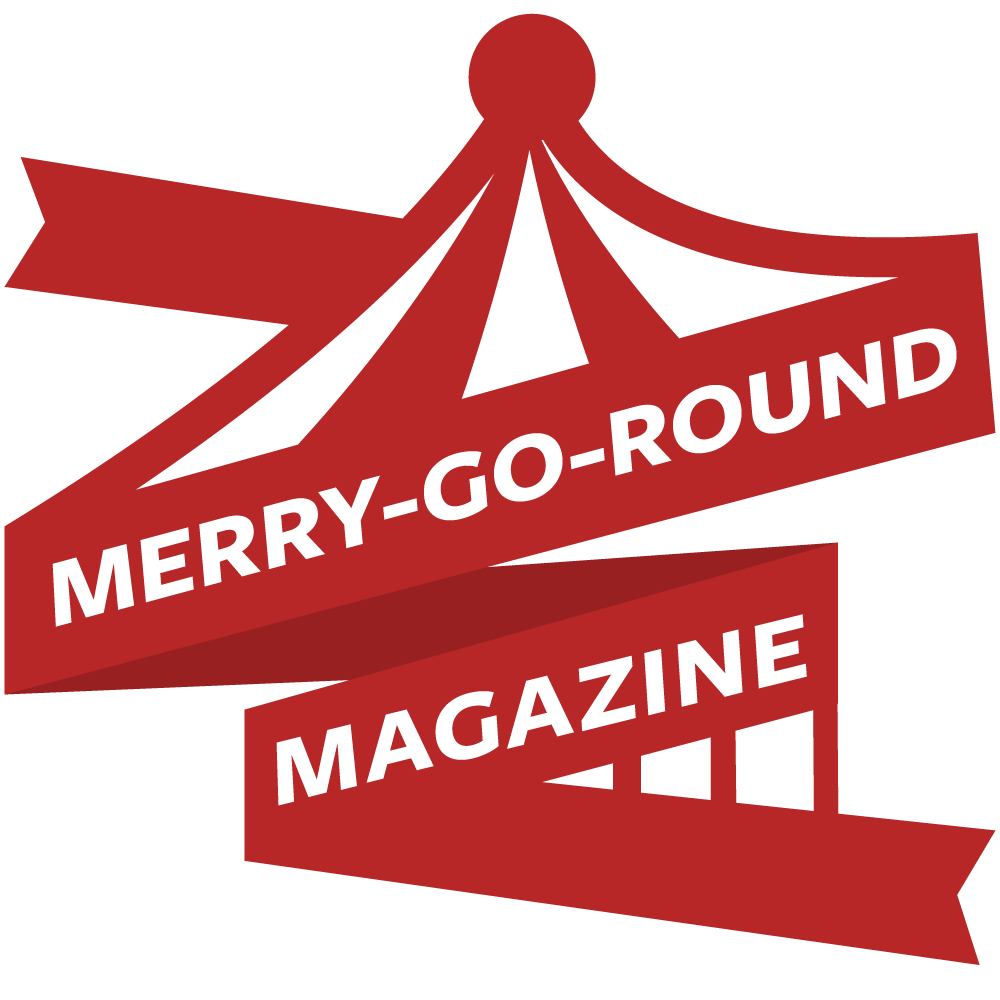
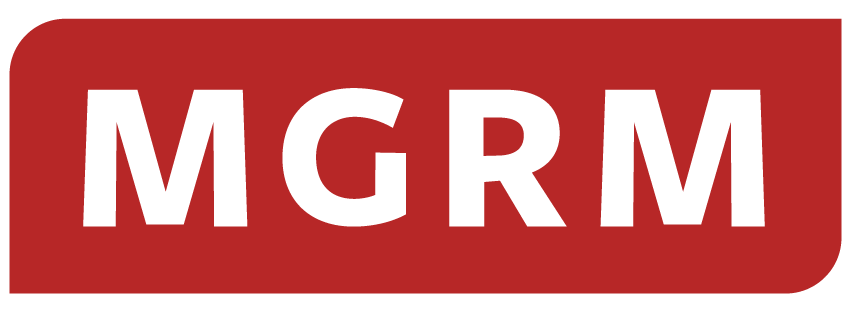
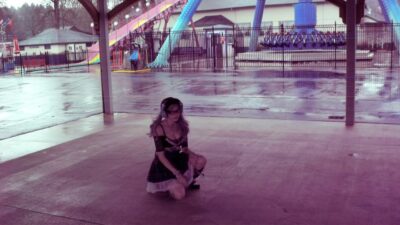
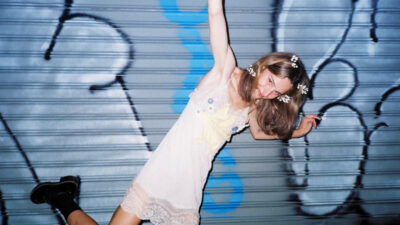
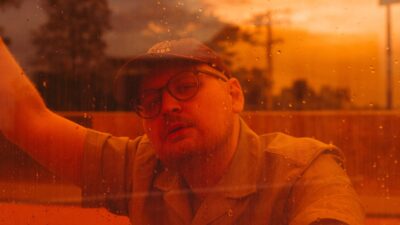
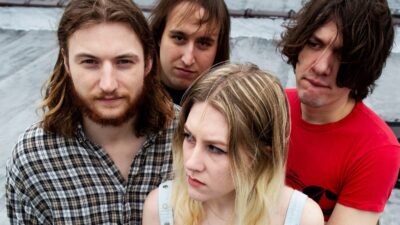
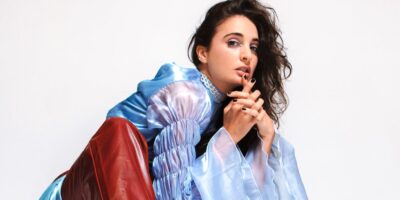
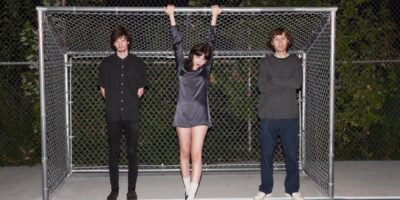
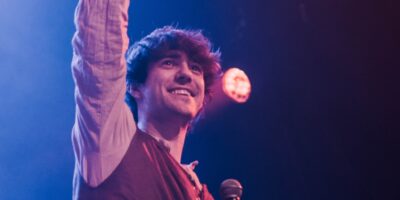
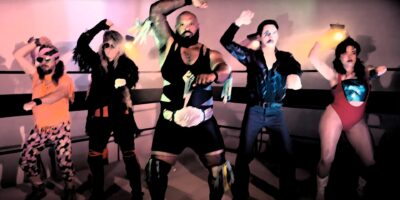

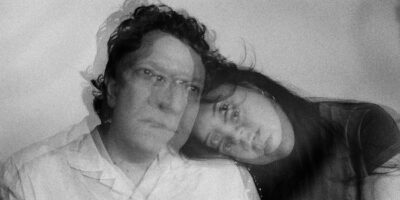

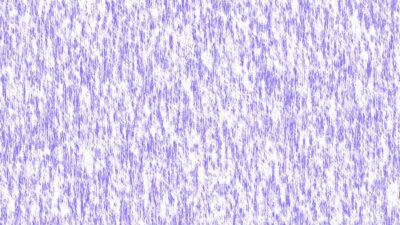
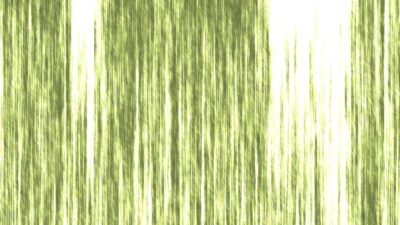

Comments